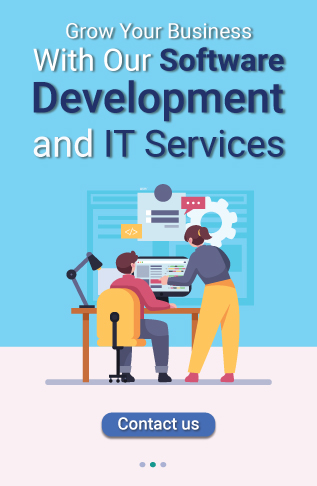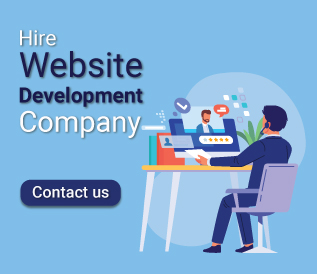The modern world requires a modern processing ERP system that reduces the effort and resources of the industry. ERP systems are used to combine multiple business functions like finance, HR, supply chain, and customer management. It enables departments to collaborate better and gain real-time visibility into critical operations to make better, data-driven decisions. And though ERP systems are more manageable and inconceivable than they once were, the development of one is a complex process. It requires a sound knowledge of the organization itself and the special needs as they are expressed and changed.
The first step in developing an ERP system is careful planning. That is, you have to figure out key business processes, define the scope of the project, and choose the right technology. The next step is to design features that can be customized to each business domain. The system needs to be scalable, secure, and adaptable to cater to the future growth of the business so that it undergoes a smooth business expansion.
Table of Contents
ToggleWhat is ERP?
ERP is called Enterprise Resource Planning Software, which standardizes, streamlines and incorporates business processes in all divisions, including accounting and finance, human resources management (HR) and supply chain, procurement and sales, etc. Not only does it help to automate back-office operations, but also it stores and transfers terabytes of sensitive data easily and improves strategic decision-making.
Custom ERP System Development
The process of developing your enterprise resource planning system is rather complicated but worth it. You will get the core privilege — ideal compatibility with your company’s processes, which will pay off. You need to follow the process of development if you want custom ERP software. ERP is a repetitive process as the firm needs new modules often and according to their requirements.
1. Define the Project Goal
Defining the project goal is a key step in which the client outlines the primary reasons for investing in custom ERP software. It involves communicating the desired outcomes, such as improving efficiency, streamlining processes, or enhancing data management. The IT department, alongside the client, will evaluate whether these goals align with the organization’s broader objectives and justify the project’s completion, ensuring that the custom ERP system delivers measurable value and addresses critical business needs.
2. Developing a Blueprint and Wire Framing
Like in most activities, a blueprint serves as the basis for the entire project, and it should be well-defined. The custom system blueprint provides complete detail on the implementation process, the timeline and the tools to be used. It is a document created by every individual involved with the target system. This includes the system developers (whether in-house or outsourced), organization managers, IT leaders, and at times the end-user of the software. They are all essential in the creation of the master plan.
Wireframing involves stating the components involved in the custom ERP development process, whether is it the sales, HR, accounts, procurement and so on. This creates the foundation of the business operations and the data to be integrated with the system.
3. Choose the Right Technology
Choosing the right technology for developing a web-based ERP system involves several key decisions. You need to decide between cloud or local server hosting, with the cloud often preferred for its security and low maintenance. Select a programming language, like JavaScript, which is ideal for both frontend and backend development with frameworks like Node.js development services. Additionally, choose a database—SQL for standardized data or NoSQL for complex, flexible data storage formats like JSON.
4. Development
At the development stage, important technical decisions must be made, including selecting hosting (either local or cloud-based), choosing a database (popular options include MySQL, Oracle SQL, and PostgreSQL), and deciding on tools and programming languages (Java, Python, and .NET are widely used for ERP development). Additionally, attention must be given to UX/UI design to ensure the system is user-friendly and effectively meets business needs.
5. Test and Review
In the Test and Review phase, the developer evaluates whether the system meets the specified requirements. This can be done in two ways: First, specific data can be used to test whether the system delivers the features and functionality outlined in the blueprint. Second, the system can be released to a select group of users who will interact with it as end-users, providing a comprehensive assessment of its performance and usability.
Benefits of ERP System
Here are some of the main reasons and benefits why organizations use ERP systems:
- Finance & Accounting
- Provide business leaders with real-time visibility into their operations.
- Provide business leaders and teams with instant access to their global supply chains.
- Enable business leaders to identify challenges, uncover opportunities, and make faster decisions that impact different areas of their businesses.
- Help automate and streamline tedious tasks and redundant processes.
- Give employees the tools and data they need to be successful.
- Provide a single point of truth for organizations.
- Can often be accessed from anywhere (off-site and from mobile devices).
- Help increase productivity among your team.
- Make it easier for teams to collaborate, and with third-party vendors.
- Offer powerful reporting and forecasting tools that you can use to make informed decisions about the future of your business.
- Keep data secure and help you ensure that your business continues to operate in compliance with global regulatory laws and guidelines.
Looking to build an ERP System in your existing software
DreamSoft4u- A Leading Software Development Company.
Conclusion
Choosing the right ERP system development company is important while implementing your ERP. The most sensible way to choose a partner for your eLearning project is by taking the time to evaluate potential companies based on their expertise, industry knowledge, customization capabilities, and support services. A good development partner not only brings a great system to you but will also be around and support you through the long term as your business develops and changes so that your ERP system continues to be a useful resource for your success.
FAQs
Q1. What should I look for in an ERP system development company?
Look for a company with proven experience in your industry, strong technical expertise, customization capabilities, and a solid track record of successful implementations. Additionally, ensure they offer long-term support and maintenance services.
Q2. How long does it typically take to develop an ERP system?
The timeline for ERP development varies based on the complexity of your business processes and the customization required. On average, it can take several months to a year, including planning, development, and testing phases.
Q3. How much does it cost to develop an ERP system?
Costs depend on the scope, features, and level of customization needed. It’s essential to get a detailed estimate from the company, including potential additional expenses for support and future upgrades.
Q5. Will I be able to customize the ERP system to fit my specific business needs?
Yes, a good ERP development company will offer customization options to tailor the system to your unique business requirements, ensuring it supports your specific processes.
Q6. What kind of post-implementation support should I expect from the development company?
Post-implementation support is crucial. The company should offer ongoing maintenance, troubleshooting, regular updates, and assistance with any changes or scalability needs as your business grows.




















